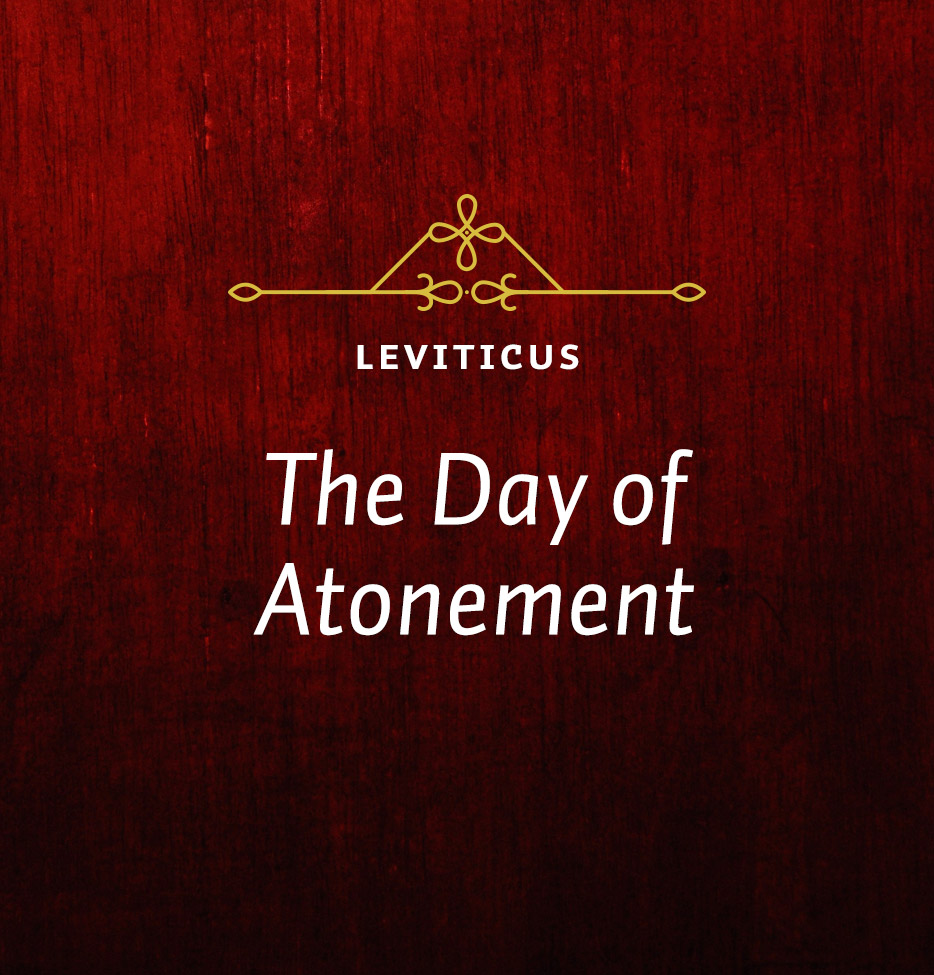The climax comes when John the Baptist pointed to the Lord Jesus Christ and said, “Behold the Lamb of God who takes away the sin of the world” (John 1:29). Jesus Christ is the culmination of the revelation, the one who embodies everything that all the sacrifices symbolized and the one to whom all the sacrifices pointed.
In the Hebrew text, the name for this day is actually plural. It’s the Day of Atonements, or the Day of Sacrifices, because there were a number of them. But let’s get an idea of what happened in order on that day. Because Aaron was a sinful man himself, he couldn’t even handle the sacrifice for the sin of the nation until he had first offered a sacrifice for himself, which was a bull, a very large animal. Aaron was told to sprinkle the blood on the mercy seat within the Most Holy Place.
But before Aaron could do that he had to take the censer and put incense upon it, which would burn and produce clouds of smoke. He passed through the curtain that separated the Holy Place from the Most Holy Place, and allowed the smoking incense coming from the censer to fill the Most Holy Place of the tabernacle. The cloud of incense was to cover the presence of God above the mercy seat so that Aaron would not die when he returned to sprinkle the bull’s blood that had been sacrificed for his sin.
After the sacrifice of the bull, there were two unique offerings. Two goats were used: one was killed, and that blood was brought into the Holy Place; and the second, called the scapegoat, was driven away to “escape” into the wilderness.
On the Day of Atonement, Aaron went into the Most Holy Place four times: first with the censer, then with the offering for his own sin, again with the censer, and then a final time with the great and unique sacrifice that stood for the sin of the people.
The two goats symbolized two important things that have to be done with our sin. Our sin makes us guilty before God, and we fall under the judgment of God for our sin, because the Judge of all the universe must do right. He has to punish sin; He cannot ignore it. Like most sacrifices, the first goat symbolizes the innocent dying for the guilty, just as Jesus Christ does for sinners.
But the second goat, the one that’s driven away into the wilderness, symbolizes something else equally important. It’s not just that the penalty of our sin is provided for by the death of Jesus Christ; we also have the guilt and burden of our sin removed from us.
To understand this in greater depth, we have to look again at the ark of the covenant. It was a box containing, among other things, the Ten Commandments on stone tablets. The ark had a cover on it, made of solid, beaten gold, called the mercy seat. On either end of the mercy seat, facing inward there were two figures of cherubim. Their wings were curved in such a way that they almost met at the top. In a symbolic but nevertheless visible way, because of the descent of the glory cloud, God Himself dwelt among His people in that spot above the mercy seat between the wings of the cherubim. That was the throne of God, and therefore no one could barge into His presence in the Most Holy Place. Even Aaron the high priest, when he went once a year on the Day of Atonement, had to be hidden by the smoke from the incense, having first made atonement for his own sin.
Here is the thrice-holy God—holy, holy, holy—looking down on His law that everybody on the face of the earth has broken. That is a picture of judgment, because the holy God of the universe must judge sin. We fall under the curse of God, which brings with it not only physical death, but above all spiritual death—being cut off from the presence of God forever.
Now with that in mind, understand what happens on the Day of Atonement. The high priest confesses the sin of the people over the first goat, so that the goat represents the people as it dies for their sin. The high priest—Aaron in the first instance, and then all the successors who came after him for generation after generation—takes the blood of that animal and carefully, after filling the Most Holy Place with the incense, goes in and sprinkles the blood with his finger upon the mercy seat. Now we understand why it’s called the mercy seat. As God looks down, what He sees is not the broken law that condemns us, but rather He sees the blood that testifies to the death of the victim that has died in place of the sinner. The wages of sin is death, and judgment has been meted out. But since the animal has died, the love of God can go out to embrace and fully save the sinner.






